
East Turkestan or East Turkistan, also called Uyghuristan, is a loosely-defined geographical region in the northwestern part of the People's Republic of China, which varies in meaning by context and usage. The term was coined in the 19th century by Russian Turkologists, including Nikita Bichurin, who intended the name to replace the common Western term for the region, "Chinese Turkestan", which referred to the Tarim Basin in Southern Xinjiang or Xinjiang as a whole during the Qing dynasty. Beginning in the 17th century, Altishahr, which means "Six Cities" in Uyghur, became the Uyghur name for the Tarim Basin. Uyghurs also called the Tarim Basin "Yettishar," which means "Seven Cities," and even "Sekkizshahr", which means "Eight Cities" in Uyghur. Chinese dynasties from the Han dynasty to the Tang dynasty had called an overlapping area the "Western Regions".
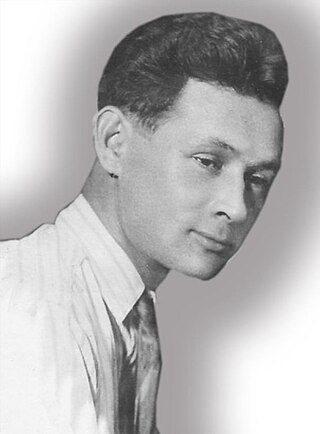
Habib Yunich was a Chinese Tatar educator, journalist, and politician. He served as the Second East Turkestan Republic's first education minister, from the state's establishment in 1944 until his sudden death from typhus in 1945. He was succeeded by his deputy Saifuddin Azizi.

Ehmetjan Qasim was a Uyghur revolutionary and statesman who held several important positions in the governments of the Second East Turkestan Republic and the Republic of China's Xinjiang Province. He notably served as the vice chairman of the Coalition Government of Xinjiang Province.

The East Turkestan independence movement is a political movement that seeks the independence of East Turkestan, a large and sparsely-populated region in northwest China, as a nation state for the Uyghur people. The region is currently administered as a province-level subdivision of the People's Republic of China (PRC), under the official name Xinjiang Uygur Autonomous Region (XUAR). Within the movement, there is widespread support for the region to be renamed, since "Xinjiang" is seen by independence activists as a colonial name. "East Turkestan" is the best-known proposed name as it is the historical geographic name of the region and the name of the two independent states that briefly existed in the region in the first half of the 20th century.

The East Turkestan Republic (ETR) was a short-lived satellite state of the Soviet Union in northern Xinjiang, which existed from 1944 to 1946. It is often described as the Second East Turkestan Republic to differentiate it from the First East Turkestan Republic (1933–1934), but "second" was never a part of its official name.
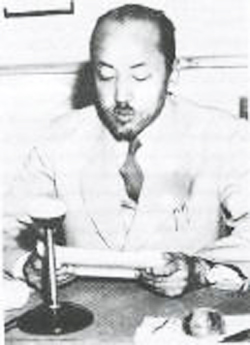
Muhammad Amin Bughra, sometimes known by his Han name Mao Deming and his Turkish name Mehmet Emin Buğra (1901–1965), was a Uyghur Muslim leader who planned to set up a sovereign state, the First East Turkestan Republic. Muhammad Amin Bughra was a Jadidist.

Elihan Tore was the President of the Second East Turkestan Republic. He was born in Tokmok, formerly known as Balasagun, Kyrgyzstan and in 1920 he escaped from the Soviet Union to Kashgar in East Turkestan. In April 1944, Elihan Tore along with Abdulkerim Abbas, Xabib Yunich and nine others formed a liberation organization in Ghulja (Yining) to free East Turkestan of Chinese Nationalist rule. On 11 November 1944, they launched the Ili Rebellion with the support of the Soviet Union.

The East Turkestan National Army was the armed forces of the Second East Turkestan Republic (ETR). It was active from 1945 to 1949, beyond the dissolution of the ETR in 1946, when it was renamed the Ili National Army per a peace agreement between the ETR leadership and representatives of the Republic of China. It originally consisted of six regiments: the Suidun Infantry Regiment, the Ghulja Regiment, the Kensai Regiment, the Ghulja Reserve Regiment, the Kazakh Cavalry Regiment, the Dungan Regiment, the Artillery Subdivision, the Sibo Subdivision, and the Mongol Subdivision. The last two subdivisions were later reformed to regiments. All regiments were armed with mostly German-made weapons that were provided by the Soviet Union on orders by Joseph Stalin. Its personnel was trained in the Soviet Union. Rebel aviation included 42 airplanes, which were captured in the Ghulja Kuomintang air base and repaired by Soviet military personnel.

Saifuddin Azizi was a Chinese politician who occupied several top positions in the government of the People's Republic of China (PRC). An ethnic Uyghur, he is most well-known for serving as the first chairman of the Xinjiang Uyghur Autonomous Region. Before the proclamation of the PRC in 1949, he served in the government of the breakaway Second East Turkestan Republic, as Minister of Education.
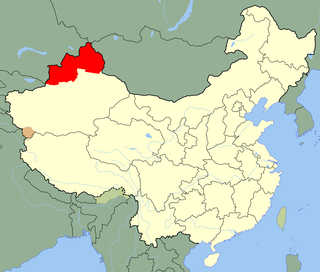
The Ili Rebellion was a separatist uprising by the Turkic peoples of northern Xinjiang against the Kuomintang government of the Republic of China, from 1944 to 1946. The Ili Rebellion began with the East Turkestan National Revolution, known in Chinese historiography as the Three Districts Revolution, which saw the establishment of the Second East Turkestan Republic. The leadership was dominated by Uyghurs but the population consisted mostly of Kazakhs.

Yulbars Khan, courtesy name Jingfu (景福), was a Uyghur chieftain and Kuomintang general during the Chinese Civil War. He entered the service in the Kumul Khanate of Muhammad Khan of Kumul and later his son Maksud Shah. He served as an advisor at the court, until when Maksud died in March 1930, governor Jin Shuren abolished the khanate. Yulbars then conspired with Khoja Niyaz and Ma Zhongying to overthrow Jin in the Kumul Rebellion. According to some people, Ma restrained Yulbars from traveling to Nanking to ask the Kuomintang for help, Ma earlier had an agreement with the Kuomintang that if he seized Xinjiang, he would be recognized by the Kuomintang as its leader.

The Kuomintang Islamic insurgency was a continuation of the Chinese Civil War by Chinese Muslim Kuomintang Republic of China Army forces mainly in Northwest China, in the provinces of Gansu, Qinghai, Ningxia, and Xinjiang, and another insurgency in Yunnan.

Burhan Shahidi was a Chinese Tatar politician who occupied several high-level positions in Xinjiang, in the governments of the Republic of China and the People's Republic of China.
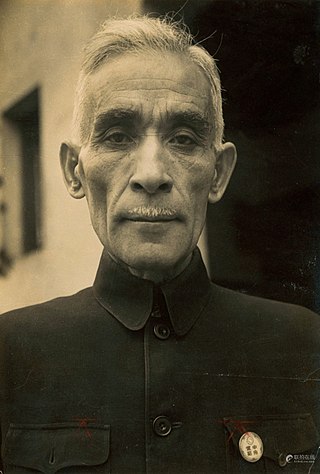
Masud Sabri, also known as Masʿūd Ṣabrī, was an ethnic Uyghur politician of the Republic of China who served as the governor of Xinjiang during the Ili Rebellion. He received education at Kulja and Istanbul and was a Pan-Turkist. Chiang Kai-shek appointed him the first Uyghur governor of Xinjiang.
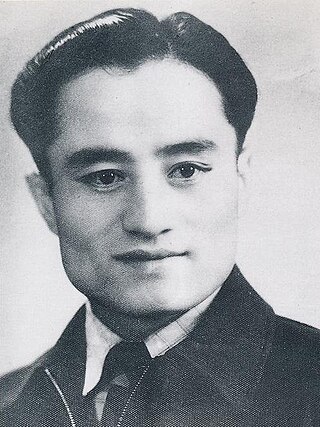
Abdulkerim Abbas was a Uyghur revolutionary active in Xinjiang, China, during the 20th century. He was one of the leaders of the Ili Rebellion of 1944, which led to the founding of the Second East Turkestan Republic (ETR) in northern Xinjiang. Abbas, along with Ehmetjan Qasim, headed the Marxist faction within the ETR, which in 1946 set aside the rebellion's declaration of independence and joined the Chinese nationalists in forming provincial coalition government.

Ishaq Beg Munonov, also Isḥāq Beg, was an ethnic Kyrgyz leader in Xinjiang, China during the first half of the 20th century.
Yusupbek Mukhlisi (1920–2004) was a Uyghur nationalist, former military officer, and the leader of the United Revolutionary Front of East Turkestan (URFET) who advocated for the restoration of an independent East Turkistan Republic.

Xinjiang Province or Sinkiang Province was a province of the Republic of China. First set up as a province in 1884 by the Qing dynasty, it was replaced in 1955 by the Xinjiang Uygur Autonomous Region of the People's Republic of China. The original provincial government was relocated to Taipei as the Sinkiang Provincial Government Office (新疆省政府辦事處) until its dissolution in 1992.
The East Turkestan Revolutionary Party (ETRP) was a clandestine communist party active from 1946 to 1947, in what is now Ili Kazakh Autonomous Prefecture, in the Xinjiang Uyghur Autonomous Region of China. Abdulkerim Abbas, a Uyghur revolutionary who served as the interior minister of the Second East Turkestan Republic (ETR), led the party as chairman of a seven-member central executive committee.

The Coalition Government of Xinjiang Province was the governing body of China's Xinjiang Province from 1946 to 1947. It was formed after a Soviet-brokered peace agreement between the Republic of China (ROC) and the breakaway Second East Turkestan Republic (ETR). The dissolution of the ETR coincided with the establishment of the coalition government; however, the interests of the ETR's former leaders were retained through the subordinate Ili District Council.




















